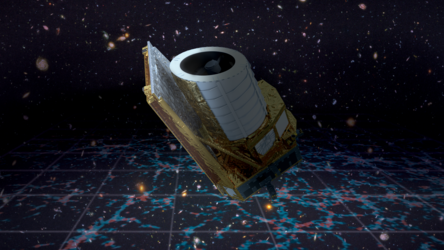Smart manufacturing cuts cost of rockets
A manufacturing process used extensively by the car industry is being adapted to make it cheaper, quicker and environmentally cleaner to produce major components of future launchers.
Extending the technique to rockets is part of ESA’s Future Launchers Preparatory Programme, working with industry partner MT Aerospace, in cooperation with NASA Langley Research Center and Lockheed Martin.
‘Flow forming’ shapes a metal element in a single step. The first piece, a 43 cm-diameter aluminium tube forming part of the upper stage of a research rocket, was put to the test last week at NASA’s Wallops Flight Facility on a suborbital mission lasting nine minutes.

To create this component a thick, short tube is placed on a carrier – a mandrel. External rollers push the metal along, making the tube both thinner and longer.
At the same time, the metal flows into the mandrel’s grooves to create a thin cylindrical skin reinforced with internal blades.
Metal flow forming has so far been used to make complex parts only a few centimetres across. The challenge for launch vehicles is to adapt the technique to produce large single-piece elements such as cryogenic tanks or the structures that connect rocket stages.
The required diameter varies depending on the vehicle, from 3 m for launchers like Vega, Ariane and Falcon to 8 m for NASA’s large Space Launcher System.
Traditional methods involve multiple steps, many welds, time and expensive jigs and tools, introducing risks at each step. Interstage structures must withstand large mechanical loads at launch yet be as light as possible.
A plain tube is heavy but it can be made thinner if reinforced by ‘blades’ in the shape of an ‘I’ or a ‘T’ welded to the inner side or directly machined. This approach is expensive and time-consuming and yields a large amount of scrap metal. Such multipiece welded assemblies are also risky.
By contrast, flow forming requires no welds for a tube and perhaps one or two for a cryotank. The weight is optimised and cost reduced through the much shorter production time. It is also better for the environment because it saves energy and there is no waste material.

To date, 15 stiffened aluminium tubes of 0.5 m diameter have been built, demonstrating that this is a reliable method for creating structures with larger diameters.
“We are confident that we can build structures with diameters of 3 m to 8 m and higher, with complex shapes,” commented Adriana Sirbi, ESA’s project manager.
“In the future, we wish to produce a stiffened cryogenic tank with tank domes. The results from yesterday’s tests have moved us closer to that goal.”















 Germany
Germany
 Austria
Austria
 Belgium
Belgium
 Denmark
Denmark
 Spain
Spain
 Estonia
Estonia
 Finland
Finland
 France
France
 Greece
Greece
 Hungary
Hungary
 Ireland
Ireland
 Italy
Italy
 Luxembourg
Luxembourg
 Norway
Norway
 The Netherlands
The Netherlands
 Poland
Poland
 Portugal
Portugal
 Czechia
Czechia
 Romania
Romania
 United Kingdom
United Kingdom
 Slovenia
Slovenia
 Sweden
Sweden
 Switzerland
Switzerland


























